Summary
"A home for your car"- Peer-to-peer parking space sharing solution
- Helps ease the congestion, pollution, and stress of parking
- Provides convenient parking for drivers
- Provides passive income for owners
- Long- and short-term parking options
Activities:
- UX design
- UX research
- Interaction design
- Prototyping
- Iteration
- Visual design & branding
- Video production
- Team collaboration
My role:
- Team user experience design
- Team user experience research
- Team interaction design
- Sole paper prototyper
- Sole visual design
- Sole video production
What I learned:
- How to conduct UX research
- How to conduct UX design
- How to construct and conduct online surveys
- How to see a project through from ideation to high-fidelity prototyping
- Pitching techniques
- Cross-discipline collaboration
The Process
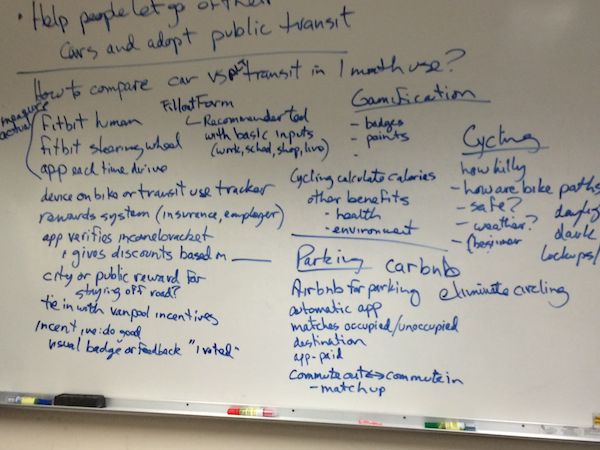
Whiteboard session. We brainstormed, building on each other's ideas. We generated ideas on what to focus on when discovering user needs. We discussed possible issues and benefits of our concept.
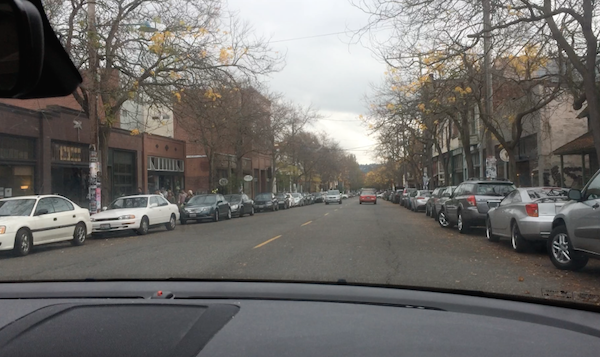
Field research. I conducted a contextual inquiry session, documenting a driver looking for parking in a destination neighborhood.
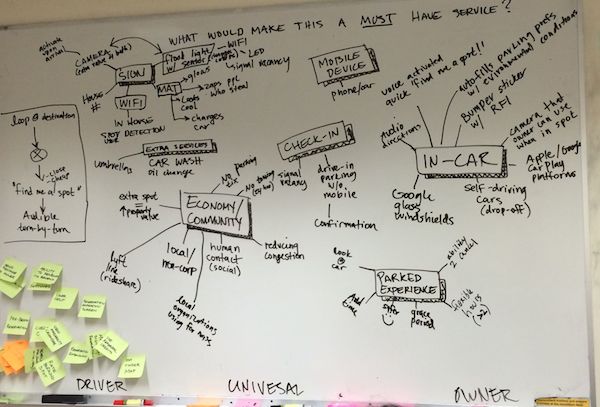
Affinity mapping. Our team organized our research findings into an affinity map. This map guided our choice when deciding on the form of the solution.
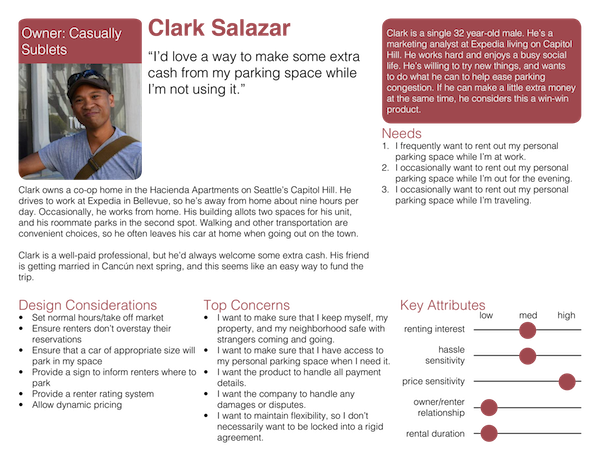
Persona generation. From our research and field work, four main personas emerged. We developed two driver personas (short- and long-term rentals), and two owner personas (short- and long-term rentals). We used these personas in our product development.

Sketch. I began refining the elements from the whiteboard and research sessions and into a working design.
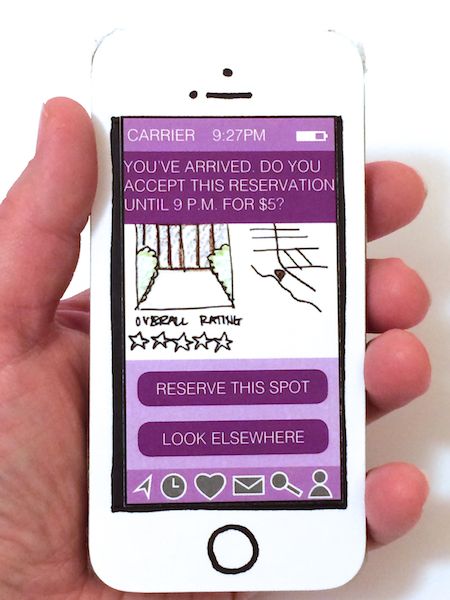
Paper prototyping. I made realistic paper prototypes for our usability study. I started with a cardboard iPhone I made to actual specifications. I even covered the corners with tape to protect users from sharp cardboard edges.
I then converted our rough sketches to paper screens. I cut slits in the skin of the phone to slip the scrolling screens through. The prototype made it easy for our users to imagine our product's behavior during our usability study.
I then converted our rough sketches to paper screens. I cut slits in the skin of the phone to slip the scrolling screens through. The prototype made it easy for our users to imagine our product's behavior during our usability study.
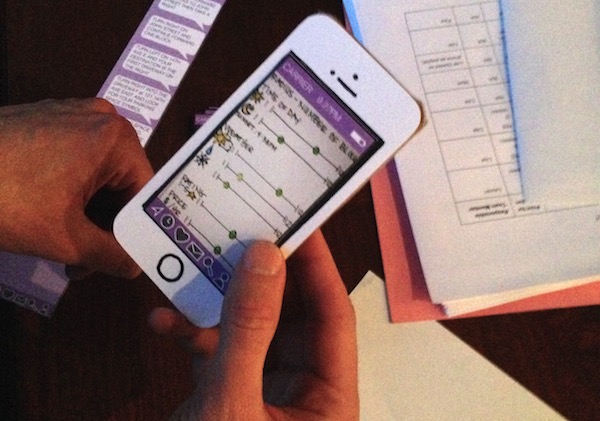
Usability study. We conducted a uability study using low-fidelity elements. We guided users through a scripted drive using our product. I created sound files that we played over the car's Bluetooth system that I controlled manually.
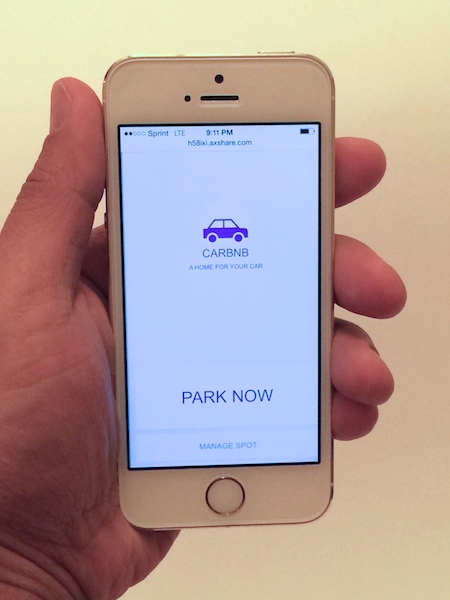
Iteration and high-fidelity prototyping. Using data gathered during our usability study, we iterated our design and generated a high-fidelity Axure prototype.
Video production. I made videos of the Carbnb experience and our process and product.